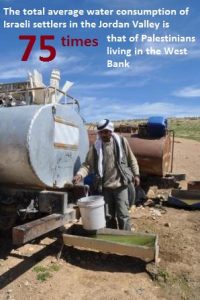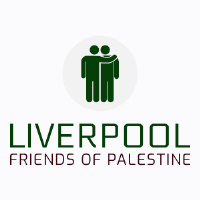
One of the most prominent struggles Palestinians in the Occupied Territories face day-to-day is over access to water.
As Israel controls the water resources, Palestinian villages can go days at a time without water and rural areas often have no access at all. Palestinian families are forced to purchase water from other sources at higher prices. Attempts to drill wells are blocked by the Israeli authorities as taking such measures would require an official permit which is near impossible to attain. With this blatant violation of human rights and the daily strain it inflicts upon Palestinians, the dispute over water resources is one of the major ongoing barriers to peaceful resolution in the region.
THE OSLO ACCORDS
The Oslo Accords were a set of agreements between the Israeli government and the Palestinian Liberation Organisation with the intent of establishing a ‘peace process’ between the two groups. As part of this, the PLO agreed to recognise the state of Israel and the Israeli government recognised the PLO as being the official representatives of the Palestinian people. One of the primary concerns of the agreement was the right of Palestinians to self-determination but it failed to create an independent Palestinian State.
The 1995 Interim agreement aimed to establish an elected council for Palestinians whilst avoiding a threat to Israeli security. Palestinians were hopeful that these new measures would allow them greater access to water resources, but this did not happen.
The Accords divided the West Bank into three categories known as Areas A, B and C. Areas A and B are under differing degrees of Palestinian control. They make up 40% of the land, yet they hold 95% of the population. The infrastructure that serves to supply the water to people living in Areas A and B is located exclusively on land classed as Area C which is under full Israeli control and is also home to Israeli settlements and military bases.
So all that happened was that Palestinian officials were now able to manage their own meagre water supply and were made responsible for the maintenance of the water pipes, which were by that stage in a very poor condition. But they were given no say on the amount of water that could be extracted from the wells – these powers remained in the hands of Israel. The agreement specifically denied the rights of Palestinians to reduce the excessive quantities of water extracted by Israel. Israel has been massively exceeding the quantities that were apportioned to them in the agreement, which is four times more than that of the Palestinian population.
UNEQUAL CONSUMPTION
The World Health Organisation recommends a daily usage of 100 litres of water per person a day. Palestinians living in the Occupied Territories use well below this at approximately 70 litres per day, with those living in rural areas using even less. By comparison, Israelis use on average 300 litres per day, well exceeding the recommended amount. Whilst lack of water leaves many Palestinian farmers unable to maintain their land, many homes on the Israeli settlements have swimming-pools. The result of this is that the 450,000-plus Israeli settlers inhabiting the West Bank are using more water than the 2.3 million Palestinians residing there.
SOURCES OF WATER
The Mountain Aquifer – Water can be extracted from the Mountain Aquifer which is kept replenished by rain and snow. The Mountain Aquifer consists of the Western Aquifer (yielding 363 million cubic metres annually), the North-Eastern Aquifer (145 mcm) and the Eastern Aquifer (172 mcm). This is an important source of water for both Israelis and Palestinians. Israelis use over 80% of the annual yield from the Mountain Aquifer and are over-extracting at an unsustainable rate and causing serious damage to this important resource. Palestinians are allocated such a limited share of the supply that they must often purchase quantities of Mountain Aquifer water from Israelis.
The Coastal Aquifer – This runs down the coast towards Gaza. Due to deep wells installed along the Gaza border by Israel, most of the water is extracted before it can reach Gaza. The small amount that gets there is highly polluted by salt and nitrates from fertilisers that have run into the water table. The result is that the only a small fraction of the water that runs through to Gaza is safe to drink.
The Jordan River– Israel denies Palestinians access to any water from the River Jordan. This sanction is upheld by barriers which prevent the Palestinians accessing the river banks and by re-directing the flow of water upstream towards Lake Kinneret and the Coastal Aquifer (both of which are sources of Israeli water supply that Palestinians cannot access).
Rainwater Collection – In some rural areas of the West Bank, Palestinians attempt to collect what limited rainwater they can to increase their supply. However, the Israeli army will often destroy cisterns that are built for this purpose or inhibit their use.
THE CRISIS IN GAZA
Gaza’s only source of water supply is from the Coastal Aquifer which is exposed to contamination from sewage and seawater. The majority of the water from the Aquifer is unsafe to drink. As Israel does not allow the transfer of water from the West Bank to Gaza, its residents are left with no option but to drink from the contaminated supply. Because of these they become prone to disease, suffering from vomiting, diarrhoea and nitrate poisoning.
During Israel’s war on Gaza in 2008, Israeli military attacks destroyed much of the region’s water supplies and sewage systems. As much of the damage was carried out towards the end of the 22-day operation when the fighting had been suppressed, there is nothing to indicate that the water supplies were military targets. As a result of the attacks, fields were flooded with sewage and animal carcasses were left to rot, further contaminating the Coastal Aquifer.
Attempts are made to produce drinkable water from the sea. There is a desalination plant but Israel’s siege of the territory means electricity is only available a few hours a day. The plant has also been the target of Israeli bombing.
On 9 December 2021 the EU committed 9 million euros to improving the water infrastructure in Gaza City and Jabalia. This is to complement a larger (55m euro) project, financed by the German government, to restore the central Gaza desalination plant. Read more about it HERE. In March 2022 ir was reported HERE that 35% of Gaza residents had access to clean drinking water…. so 65% still do not.
HUMAN RIGHTS
Israeli policies which bar Palestinians in the occupied territories access to water are in direct violation of international human rights laws. Both the lack of available water and the poor sanitation of the water are contrary to the human right to a standard of living that is adequate for health and well-being. The World Health Organisation also states that water must be physically and economically accessible without discriminating against marginalised sectors of society.Israel as an occupying force is obliged under the Geneva Convention to take responsibility for the welfare of the Palestinian population under their rule and to ensure that their basic needs are met. Unlawful acts such as denying access to water infrastructure and destroying cisterns are seen as war crimes.
Israel argues that any obligations it has under Human Rights Laws are not applicable to the Occupied Palestinian territories as, under the decree of the Oslo Accords, these areas have a self-governing body in the Palestinian National Authority. However, Israel still exercises the majority of control over the region’s resources and has even contended the legitimacy of the Oslo Accords in recent years.
WHAT PALESTINIANS MUST ENDURE TODAY
The water sanctions have had severe effects for Palestinians within the occupied territories. These include …
• Long journeys to purchase water from mobile tankers
• A high portion of families’ annual incomes having to be spent on over-priced water
• Farmers losing their crops (a source of food and income)
• Having to re-use water for cooking, washing, etc.
• Washing less frequently
• Being unable to keep animals
• Depending on water cisterns that are targets for the Israeli military
• Being forced out of villages they have grown up in as they have no access to the water network
• Contracting diseases from unsanitary drinking water
For example, in the village of Nabi Saleh, Palestinians have access to water for 12 hours per week. On the other hand, the nearby Israeli settlers consume water whenever they like. Manal Tamimi describes the situation in her village in the video linked from HERE.
REPORTS ON WATER
Troubled Waters – Palestinians denied fair access to water – published by Amnesty International 2009 – HERE.
Water injustice in Palestine: a limiting factor for social and economic development – published by Friends of the Earth International March 2014 – HERE.
Access to water – published by Makan January 2018 – HERE.
Parched: Israel’s policy of water deprivation in the West Bank – published by Btselem May 2023 – HERE.
WHAT IS NEEDED
Israel must put an end to all discriminatory practices and policies surrounding water resources. This means ensuring that all citizens within the Occupied Palestinian Territories are afforded an equal share of water and have equal access to the infrastructures. Sewage structures in Palestinian villages must be given proper maintenance. Military attacks on water resources must cease immediately and water transfer to Gaza must be permitted in order to combat the current crisis.
